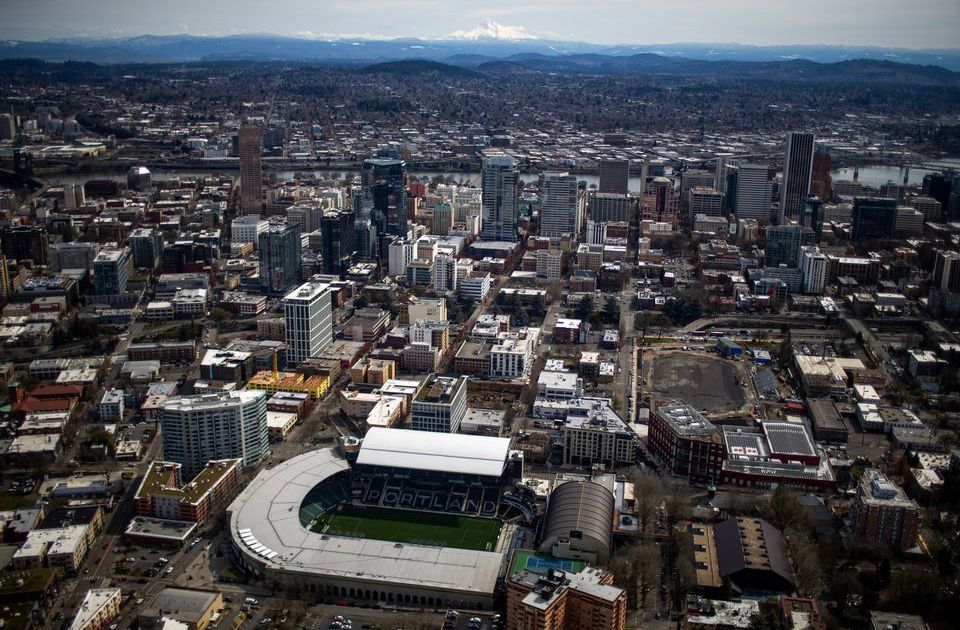Seattle is the fastest-growing big city in the U.S. What about Portland?

Portland has shed more than 18,200 residents between the pandemic’s onset and last summer, new estimates from the U.S. Census Bureau shows.
That makes Oregon’s largest city one of its fastest shrinking. Between July 2020 and July 2022, it lost 2.8% of its population. Only Troutdale lost a larger share of its residents, according to the new estimates.
But the population decline has slowed slightly. In the year leading up to July 2022, the city lost only 8,300 residents as the pandemic eased and the economy gained steam, compared with 9,900 the year prior.
Portland now has just over 635,000 residents, according to the census data.
Huda Alkitkat, program manager at Portland State University’s Population Research Center, said fewer people are moving to the city to replace those moving out, and deaths outpace births.
The new census data also show, however, that the number of occupied homes in the city continues to increase. That suggests the number of people per household in Portland is declining, with more people living on their own or with a roommate or partner rather than a large family.
“The average household size is indeed down quite significantly for rented and owner-occupied units,” Alkitkat said, citing recent census data. In 2021, the average household size in Portland was 2.5 people for owner-occupied homes and 1.9 in rented homes.
Some Portland suburbs, including Gresham, Lake Oswego, West Linn and Troutdale, have also seen their populations drop since the start of the pandemic.
For Gresham, Lake Oswego and West Linn, the population declines accelerated last year.
Gresham, the state’s fourth largest city with roughly 111,600 residents, has lost 2,850 residents, or 2.3% of its population, since the beginning of the pandemic. Lake Oswego lost about 1.8% of its residents.
Other cities in the region have grown, however, evening out localized population declines across the metro area.
Ridgefield in Clark County, Wash., saw its population grow 38% since the start of the pandemic, while Estacada and Happy Valley in Clackamas County saw a 21% and 11% growth, respectively, during the same time frame.
Cornelius in Washington County saw the third-largest population growth in the state since the start of the pandemic. Between April 2020 and July 2022, the city grew 14%, census data shows.
Amy Vander Vliet, Portland-area regional economist with the Oregon Employment Department, said a shrinking population would typically endanger the region’s enviable economic growth of recent years.
“If you have a declining population, you generally see less services available tied to the area’s population, so less dry cleaners, less hair salons, less restaurants,” Vander Vliet said, adding that a population decline would also generally have a negative impact on the job market, with fewer qualified workers for available work.
However, she said, “it’s a little trickier to measure” the economic impacts in cities like Portland and larger suburbs, as the labor force is still close by and the businesses — while perhaps moving around — remain.
“If people left Portland or a nearby suburb but still live in the metro area, then they would still contribute to the labor market and create demand for services at a regional level,” she said.
Population decline will mean local governments likely take a hit. Vander Vliet said certain taxes collected from Portland city residents, such as its arts and the Preschool for All taxes, and the revenue from those would be impacted.
The economic impacts of Portland’s population decline remain murky, though, because data on the ages and income of the residents who remain and who have left is still limited.
Barbara Fryer, the community development director for the fast-growing city of Cornelius, said new subdivisions in the city have added more than 900 homes over the last couple of years.
“A lot of this new development was from 2020 to 2022, and so that, and the fact that our city consistently has the highest number of people per household of the Portland metro region, is why we’re seeing growth,” Fryer said.
Fryer said the newly built homes have generally been more affordable than those in the city of Portland and nearby communities. She said many of the new single-family homes started in the $300,000 range, but prices for new homes have escalated to around $700,000 in recent years.
But she said new town home subdivisions have cropped up, offering lower price points.
Fryer said she hopes that the population growth will eventually translate into more commercial development in the city. She said that while there’s been an uptick in builders inquiring about properties in the city, there has only been a couple of new commercial developments.
“I think we’re going to see some exciting things happen in the coming years,” Fryer said.
